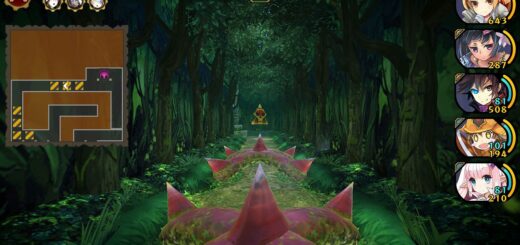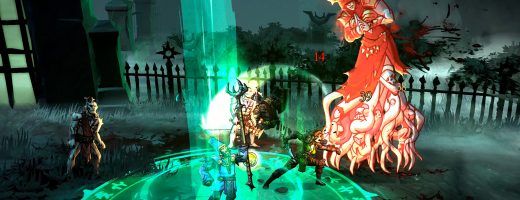Nelke and the Legendary Alchemists Impression
For most, the challenge of keeping all the plates properly spinning and making the deadlines for the various requests should be more than enough to entertain.
Twenty years. That is a respectable enough age for any series, much less one that’s steadily released at least one game per year for its entire duration. Some form of celebration is to be expected, and Gust has delivered with Nelke and the Legendary Alchemists, a game that manages to be both an homage and a celebration of its roots while simultaneously being a different sort of management simulation RPG.
Though it has regularly changed things up over the years, Gust’s Atelier series has always been a meister RPG at heart, focusing on (usually) a single heroine as she manages her workshop, advances her craft, and deals with whatever problems the often minimal plot throws at her. Variations with multiple protagonists, male protagonists, save-the-world scenarios, and even post-apocalyptic scenarios have happened, but that same meister DNA pervades all the way through.
Nelke, however, is a base-building game, which makes for an element seen only once before in the series, and then not as a focal point. The titular protagonist is a somewhat frail young woman with exquisite fashion sense who, while incapable of actually performing alchemy, is still a major fan of the art. She has been appointed manager of the town of Westbald, a sleepy little community known mainly for its connection to the Granzweit Tree, a mysterious relic of a great alchemist long lost to the mists of legend. It’s her job to improve the town and investigate the nature of this lost relic ̶ a task which no one really expects her to succeed at.
Luckily for her, at the very start of her tenure a pair of interesting young women arrive on flying broomsticks: Marlone (a.k.a. Marie) and Elfir Traum (a.k.a. Elie), the heroines of their respectively titled Gust games. The two of them were exploring through a dimensional portal located conveniently near their hometown of Salburg, and wound up in Westbald instead of some hellscape. With an interest in local ingredients and the Granzweit Tree, they’re quick to agree to stick around a while and help out.
They’re not the last ones, either. All in all, the cast roster of Nelke and the Legendary Alchemists numbers one hundred fifteen characters, only four of whom are truly original to it. Out of the lot, thirty-eight are voiced, as often as possible with their original Japanese VAs, and come with interactive scenes, personal requests, and unlockable artwork in the gallery. Twenty-three are willing and able to manage ateliers for the production of goods to either sell or use for the benefit of the town. The vast majority are notable party members or NPCs from across the series who get a few lines of dialogue at best before getting put to work.
Sadly, many characters had to be excluded, including all of the ones from the handheld Atelier games, as otherwise the cast list would have been pushing four hundred. It’s unlikely that the player will be introduced to everyone one the first, second, or even third playthrough, as minor characters tend to arrive semi-randomly every few turns (weeks of game time), which is still often enough to keep it interesting.
What use are these characters? First, they can be assigned various non-atelier jobs, managing resource-producing plots of land or selling various sorts of items to keep the local economy going. Second, they can be sent into the wilds around town, to areas Nelke has personally scouted out, in order to gather much-needed raw materials to supply the alchemists. A good balance of alchemy assignments, sales choices, and personnel management is necessary to pass the quotas and benchmarks the capitol will send Nelke’s way. In many ways, it feels like how Atelier Marie played back in the day, only at a remove from the workshop action and on a larger scale overall.
A typical turn starts with a free day, when Nelke can choose what research to fund, which characters to visit for social exchanges, and (if she’s got time left) to venture out into the wilderness with her combat-ready maidservant, the town’s hunky young mayor, or any alchemists of her choice. A nice stroll through an area nets her new ingredients, new monster encounters, and possibly even a boss to destroy.
It should be noted that a good deal of effort was put into creating 3D models for the ladies whose games never left the realm of the highly pixelated. While the later heroines (and Logy) borrow the animations for their special attacks and support powers from their respective games, characters like Marie and Elie needed theirs created out of whole cloth.
For a series spanning over two decades at this point, Atelier has managed to be pretty consistent with its character designs, with the biggest differences between the original Kohime Ose art of Atelier Marie and the more modern aesthetics of the Arland, Dusk, or Mysterious sub-series being mostly in the details of their eyes and the fanciness of their wardrobes. The main cast feels contiguous, like a group that could conceivably exist in the same fantasy world, which is a lot more than can be said of most kitchen-sink crossover games.
It should go without saying that there’s enough fun fashion in Nelke to inspire an entire convention’s worth of cosplayers. This is Gust, after all.
So, who would be interested in this game? Fans of the series, for certain, and it helps that fifteen out of the twenty titles referenced have actually seen an English release. Fans of base-building would certainly enjoy it, and the option to fast-forward through dialogue would likely be welcome to those who just want to enjoy the management side of things. Knowledge of the series and its characters is not necessary, though it will certainly make some conversations easier to understand. For most, the challenge of keeping all the plates properly spinning and making the deadlines for the various requests should be more than enough to entertain.


















Recent Comments